An Ethiopian Feast
An invitation to explore the extremely nourishing, vibrant and unique culinary creations of Ethiopia with several Full Recipes from my book (Recipes For Reciprocity)
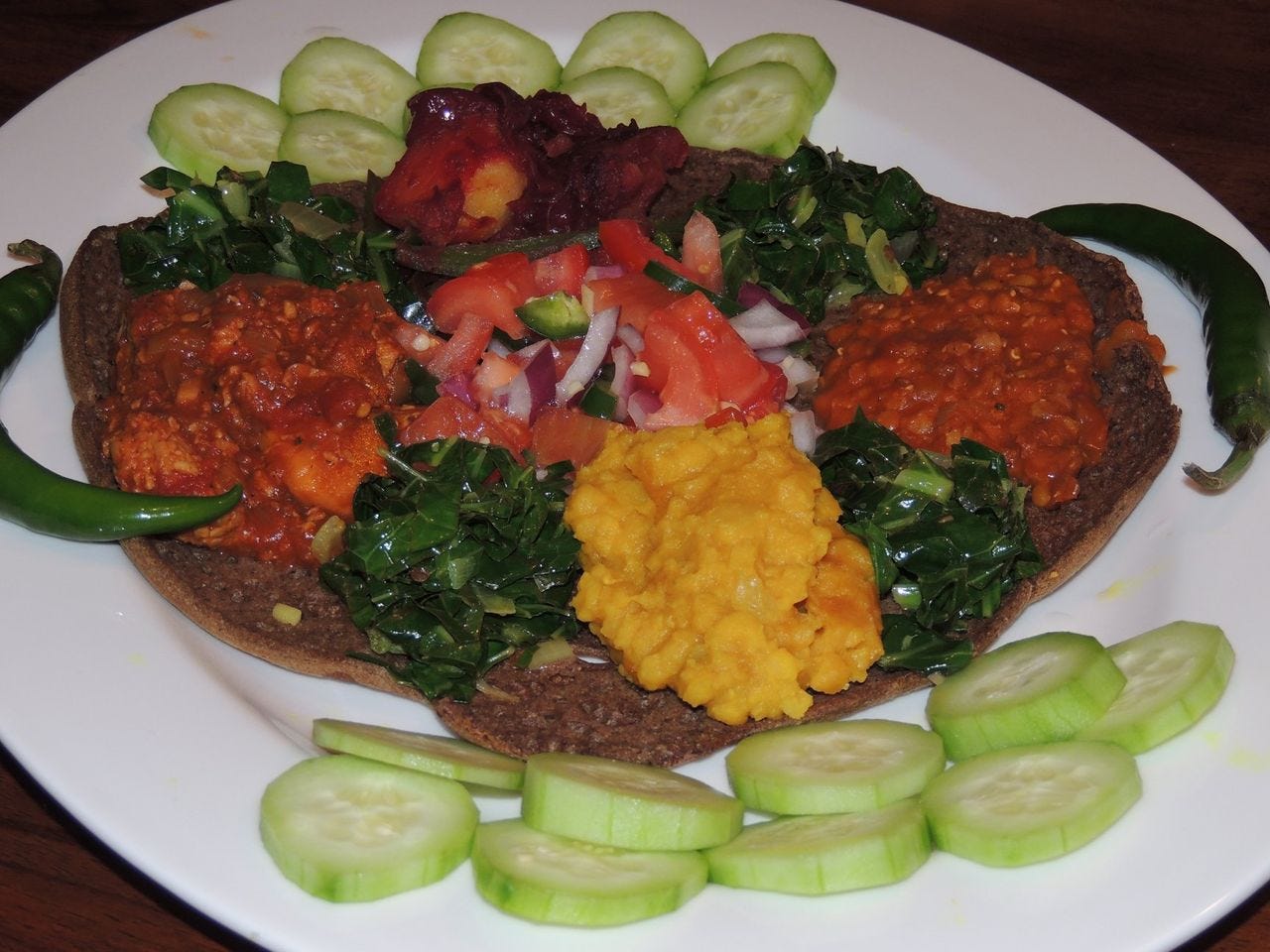
I will now share a series of full recipes from my book with all of you that have brought a lot of joy, health and happiness into our lives.
Enter Ethiopian Cuisine
In my quest to find new ways to synergistically combine some of our favorite superfoods (like turmeric, cardamom, cinnamon, ginger and hot peppers) in ways that inspire the senses I discovered the rich and illustrious world of Ethiopian food. The diverse geography and cultures of Ethiopia have allowed for some amazing cultivation, trading and cultural co-creating that resulted in some very vibrant and unique culinary creations which are now part of the fabric of the culture there.

Ethiopia is a country of geographic contrasts, varying from as much as 125 meters (410 feet) below sea level in the Denakil depression to more than 4,600 meters (15,000 feet) above sea level in the mountainous regions. It contains a variety of distinct topographical zones: the Great Rift Valley runs the entire length of the country northeast-southwest; the Ethiopian Highlands are marked by mountain ranges; the Somali Plateau (Ogaden) covers the entire southeastern section of the country; and the Denakil Desert reaches to the Red Sea and the coastal foothills of Eritrea. Ethiopia's largest lake, Lake T'ana, is the source of the Blue Nile River.
The main language spoken in Ethiopia is Amharic and so I have included the Amharic spelling of each of the recipes shared below beside the English version. Exotic spices were introduced to Ethiopian cooking by traders traveling the trade routes between Europe and the Far East. Over the centuries the locals have found many invigorating and creative ways to combine the fruits of all this diversity into mouth watering meals that not only awaken the senses and stimulate the imagination but also provide some very healthful and nourishing food.
The prominence of the use of lentils, fermented teff flat bread and nutrient-dense vegetables and spices makes Ethiopian food an ideal choice for those seeking to pursue a plant-based diet and still keep things interesting. I hope you enjoy creating and tasting the food born of this beautiful land and culture as much as we have.
Berbere (በርበሬ)
This traditional East African spice mix is truly unique and cannot be aptly described with words but i`ll do my best. As you pan toast the ingredients to bring out their unique character your entire house is filled with an illustrious and mysterious aroma.
The fragrance is layered and offers the playful and complex notes of cinnamon and cardamon that mingle together with other more spicy and robust notes creating an invigorating and spellbinding mixture.
While historians do not know much about Ethiopian cuisine prior to the 13th century, it is believed that berbere seasoning came about around 5 BC. Berbere is the Ethiopian word for “pepper.” Its arrival was at a point in Ethiopia’s history when Ethiopians ruled the Red Sea Route to the Silk Road. This gave their traders access to spices from China, including black pepper and ginger.
These spices would find their way to Ethiopian spice merchants and from them to local cooks. The result is the current mix that we know as berbere. Like most ancient spice blends, there is no one recipe. Ingredients and flavor profiles differ from region to region and even from household to household.
It is an essential seasoning in Ethiopian recipes. Berbere represents a blend of cultural and geographic influences from the spices of India to the chile peppers of the New World.
After grinding the pan-toasted whole spices and mixing together these aromas become a symphony of flavors that invoke visions of beautiful lush Ethiopian mountain valleys and camels carrying spices across stark deserts to the communities who cherish these spices for flavoring their favorite foods. The flavors range from to floral to invitingly warm and spicy.
This spice mix makes for a unique dry rub on bbq-ed goods or an amazing marinade if mixed with wine. Also can be used to create an amazing stew.
Ingredients:
- 1 tsp dried cilantro
- 1 tsp coriander seed
- 1 tsp allspice berries
- 1 - 2 tsp cumin seed
- 4 tsp fenugreek seeds
- ¼ - ½ teaspoon cinnamon
- 1/2 teaspoon ground ginger
- 1/4 of a large whole nutmeg seed
(or ½ teaspoon powdered )
- 3 - 4 tbsp ground hot chilis
- 3 tsp cardamom pods
- 2 tsp pepper corns
- 2 tbsp onion powder
Preparation:
In a small skillet, combine the whole spices.. Swirling the skillet, toast until fragrant, approx 4 minutes.
Remove from the heat and allow the seeds to fully cool, then place in a spice grinder, coffee grinder or mortar with the powdered ingredients, grind to a fine powder.
Transfer the powder to a bowl mix well. Use immediately or store in an airtight container in a cool, dark place for up to 6 months.
Niter Kibbeh (ንጥር ቅቤ)
Ethiopian Spiced Butter (Niter Kibbeh) is an amazing way to infuse the flavors, aromas and health benefits of a number of superfoods and spices into one single item. In our version of Niter Kibbeh we use coconut oil instead of butter to increase its health benefits and offer a way for those who avoid dairy to enjoy this amazing spiced oil as well.
While simmering this oil to infuse the essence of the spices and other ingredients your house fills with a warm and inviting fragrance that lifts the spirits and inspires the creative mind to imagine meals to create with the end product.
Infusing curcumin (one of the extremely beneficial active ingredients in turmeric which gives turmeric its bright color) into a healthy oil along side black pepper means having access to a very bioavailable form for everyday use. This is, in my opinion, an even better option than the Indian "Golden Milk" since Niter Kibbeh can be stored in the fridge for several months and is more versatile for cooking and accessible in a pinch.
This flavorful and healthful oil can be used for infusing meals with the warm, tantalizing and mysterious flavors and fragrances of East Africa.
Ingredients:
- 2 cups of coconut oil
- 1/4 cup chopped yellow onion
- 3 tablespoons minced fresh garlic
- 3 tablespoons minced fresh ginger
- 1 2-inch cinnamon stick
- 1 teaspoon whole black peppercorns
- 3 bay leaves
- 5 cardamom pods
- 3 whole cloves
- teaspoon fenugreek seeds
- 2 teaspoons coriander seeds
- 1 teaspoon dried oregano
- 1/2 teaspoon cumin seeds
- 1/4 teaspoon ground nutmeg (or one quarter of a nutmeg bean)
- one by one inch section of fresh turmeric rhizome or 1/2 teaspoon ground turmeric
Preperation:
Toast the whole spices over medium heat in a dry skillet for a few minutes until very fragrant. Be careful not to scorch the spices or they will become bitter. Set aside. Place all the ingredients in a medium saucepan and bring it to a low simmer. Continue to simmer over low for at least one hour or up to 90 minutes.
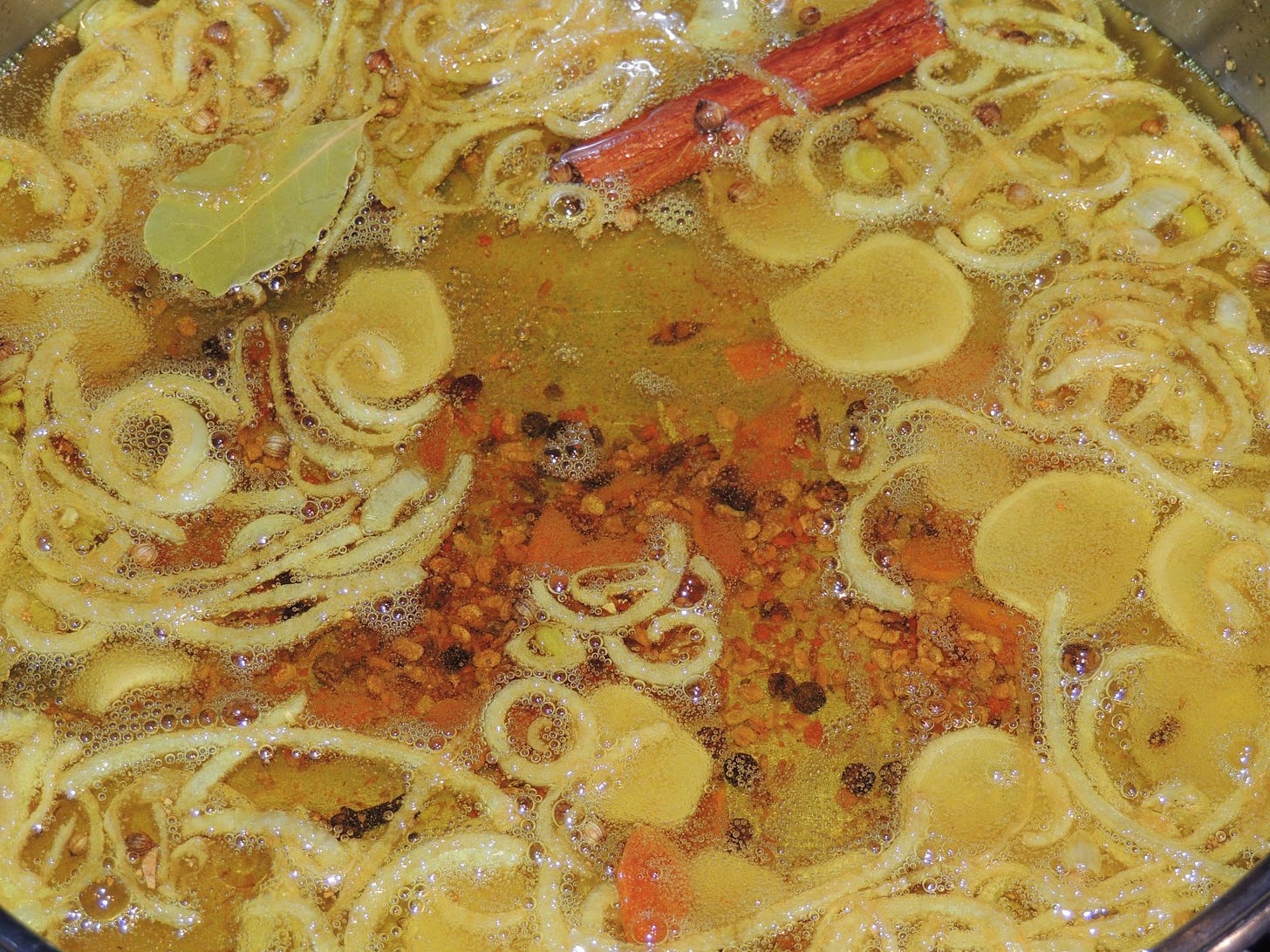
Pour everything through a fine-mesh cheesecloth. (No need to skim off the foam, everything will be removed during straining.) Pour the niter kibbeh into a jar, let it cool, and cover so that it is airtight.
It will keep at room temperature for several weeks, in the fridge for at least a couple of months, and even longer in the freezer (it will be hard in the fridge and freezer, let it come to room temp for easy scooping). Makes about 2 cups.
Injera (እንጀራ)
Wild fermented sourdough Teff flat bread.
It’s a sourdough flatbread unlike any other sourdough. It starts out looking like a crepe but then develops a unique porous and slightly spongy texture. The thin batter is poured onto the cooking surface, traditionally a clay plate over a fire though now more commonly a specialized electric injera stove (we used a large electric skillet to make ours), and the bottom remains smooth while the top develops lots of pores which makes it ideal for scooping up stews and sauces. And that’s exactly how injera is used, as an eating utensil. And as a plate. And often in place of the tablecloth.

A variety of stews, vegetables and/or salads are placed on a large piece of injera and guests use their right hands to tear portions of the injera which are used for gripping the food. The porous texture of the injera makes it ideal for soaking up the juices.
Injera is traditionally made out of teff flour, the world’s tiniest grain and also one of the earliest domesticated plants having originated in Ethiopia and Eritrea (where injera is also widely consumed) between 4000 and 1000 BC. Its production is limited to only areas with adequate rainfall though so it’s relatively expensive for most African households. As such, many will replace some of the teff content with other flours like barley or wheat. For those who can afford it, injera made entirely of teff flour has the higher demand.
There are different varieties of teff ranging from white/ivory to red to dark brown. In Ethiopia white is generally preferred and will also produce a 100% teff injera that is a lighter in color. We used 100% dark teff flour which produced a very dark injera with a deeper flavor.
You can buy pre-ground teff flour or grind your own.
100% teff flour is traditionally considered the most desirable (it also happens to be naturally gluten-free), but you can substitute part of it with other flours such as wheat or barley.
If you’re new to making injera I recommend substituting a portion of teff with barley or wheat flour as 100% is more challenging to work with.
Ingredients:
- 2 cups teff flour, brown or ivory , or substitute a portion of it with some Amaranth, barley or wheat flour
- 3 cups water
- ½ tsp salt (optional)
Note: This method involves wild yeast fermentation. See below for details about using commercial yeast as a starter
Preparation:
In a large mixing bowl, combine the flours and salt until well mixed. Add the water, stirring until combined.
Cover loosely with a paper towel and let stand, undisturbed, overnight.
Gently agitate the mixture with a wooden spoon in the morning (there should be bubbles already forming on the surface, and the fermenting water should have risen to the top).
Cover again and let stand at room temperature, undisturbed, overnight. Repeat the process of agitating the mixture the following morning, and then one more round of overnight resting.
After 3 to 4 days, your injera should smell sour and be very bubbly, which means that it's ready! Pour off about half of the water on the top of the mixture, then stir the mixture until combined. If needed, add some water to the batter to thin it out to the consistency of crepe batter.
Heat a non-stick skillet over medium heat. Depending on how good your non-stick pan is, you may need to very lightly spray it with some oil. Add about 1/3 cup of the batter to the skillet. Spread the bottom of the skillet with the injera batter - not as thin as crepes but not as thick as traditional pancakes. Allow the injera to bubble and let the bubbles pop. Once the bubbles have popped, place a lid on top of the pan and turn off the heat. Let the injera steam cook for a couple or so more minutes until cooked through (or until sides if bread begin to slightly raise /curl away from the cooking surface). Be careful not to overcook the injera or they will become gummy and soggy. Remove the injera with a spatula and repeat.
Repeat until all of the batter is used, adding oil to the skillet as necessary.
Serve with spicy vegetables, lentils, or meat dishes of your choice.
(Injera the fast cheating western way)
This accelerated version creates a facsimile of Injera, it is good and serves it essential purpose as the foundation of an Ethiopian meal experience, but there is no way to compare it to the flavors offered through the authentic wild fermented sourdough version described above.
- 2 cups flour (if mixing types containing at least
1/2 teff flour, and no more than 25% buckwheat flour)
- Package of instant yeast
- Drizzle of molasses
- Pinch of salt
- Water as needed
- 1-2 teaspoons of vinegar
- 1-2 teaspoons of baking soda
Mix enough warm water with flour (molasses, salt) and yeast to make a batter with a slightly more thin batter than pancakes (crepe ish) in a large bowl, cover with a damp dish towel and allow to rise for at least 45 at room temp. Heat stick-free cooking surface/pan to approx 200c (until a drop of water dances when dropped onto the cooking surface.) add vinegar and baking soda to batter mix well and begin cooking injera bread by pouring starting at the outside of a circle shape and moving inward. Allow injera batter to cook until bubbles on top pop and then place lid over top to steam cook the rest (for 2-3 minutes) or until sides if bread begin to slightly raise/curl away from the cooking surface. Place finished bread on a plate with layers of paper towel between each
Misir wat (አማርኛ)
This spiced red lentil stew starts with onions that are slowly caramelized in niter kibbeh (Ethiopia’s popular and incredibly flavorful spiced oil). Garlic and tomato paste are added. Then comes a generous dose of berbere (Ethiopia’s famous chili seasoning blend). It’s normally fiery-hot (and I have read that what you get in Ethiopia is even hotter than what you typically find outside of the country) but our version tones down the heat and gives you the option of adding it according to your preference.
The lentils are then slow-simmered with these highly aromatic and flavorful ingredients until they’re soft. Another spoonful of niter kibbeh and berbere are added in at the end for an added boost of flavor.
As is the case with the majority of Ethiopian quinine, Misir wat is typically served with injera (Ethiopia’s staple fermented flatbread that’s also used as an eating instrument to scoop up the lentils).
Ingredients:
- 2 cups red lentils
- 2 onions
- 6 tablespoons Niter Kibbeh
- 2-3 tablespoons berbere
- 1 can tomato paste
- Black pepper (to taste)
-1 Roma tomato
- 2-3 cloves Garlic
- Water or broth as needed
Preparation:
Melt 3 tablespoons of the niter kibbeh in a medium stockpot. Add the onions and cook over medium-high heat for 8-10 minutes until golden brown.
Add the garlic, tomatoes, tomato paste and 1 tablespoon of the berbere and cook for 5-7 minutes. Reduce the heat if needed to prevent burning. Add the broth, bring it to a boil, reduce the heat to low and cover and simmer the lentils, stirring occasionally, for 40 minutes (adding more broth if needed) or until the lentils are soft.
Stir in the remaining tablespoon of niter kibbeh and berbere. Simmer for a couple more minutes. Serve with Ethiopian injera.
Doro wat (ዶሮ ወጥ)
Ethiopia is a melting pot of ancient cultures, religions and geographic diversity. Its relative geography along the Red Sea allowed for people of many faiths and spice traders to interact.. trade recipes, supplies and culinary inspiration.
As a result of this geography, it is no surprise that the food culture in Ethiopia reflects both its Arabic and African roots. Doro Wat (typically it is a spicy chicken based stew) is the national dish of Ethiopia. The use of North African spice blend Berbere makes this dish popular throughout northern Africa. Also the traditional addition of the spiced Ghee (“Niter Kibbeh” has roots in Bangladesh). This meal adds elements which tell the stories of the countries on the ancient spice routes and evokes visions of the brightly colored and fragrant spice markets of India all the way to the lush farming valleys of North Africa.
In our version, we replace the chicken with tempeh which takes on the rich flavors of this brightly colored stew beautifully and allows for those who do not eat meat to be able to go on the journey with their senses to far away lands. Traditionally in Ethiopia, Wat(stew) is served with either Injera Bread or over rice.
Ingredients:
- 2 packages of tempeh (approx 2 cups one-inch chunks)
- 4 to 6 tablespoons Berbere
- 1 cup of red wine
- One can of whole tomatoes
- One can of tomato paste
- 1-2 fresh tomatoes, chopped
- One bell pepper, diced
- 2-3 cups of potatoes cut into large bite-sized chunks
- Juice of one lemon for marinating tempeh
- 2 tablespoons peanut oil (or olive oil)
- 1 or 2 limes
- half a small-medium sized eggplant, cubed
- Broth or water as needed
- 4-6 white onions, sliced
- 2 cloves Garlic (optional) diced
- 7-9 large mushrooms, thickly sliced
- 2-3 tablespoons Ginger, diced
- Black pepper to taste
- 6 hard-boiled eggs
- 3 cardamom pods ground
Preparation:
Heat a large saucepan. Add the onions and stir. When the onions start looking dry, add 1/4 cup of water and cook until the mixture dries up. Keep adding a couple of tablespoons of water each time the onions dry and start to stick, stirring at frequent intervals, until the onions become golden-brown. Like I said earlier, this took me more than an hour on medium heat, but don't skip this step and hurry to add other ingredients because the roasted onions add a lot of flavor.
Squeeze the lemon over the tempeh cubes and add some black pepper, set aside.
Now add the oil, tomato paste, ginger, bell pepper, cardamom, potatoes and garlic and cook, stirring frequently, for about 2-3 minutes. Add the Berbere, 1/2 cup of water, and the Niter Kibbeh. Stir to mix and bring the mixture to a boil.
Add the mushrooms, eggplant, fresh tomatoes and tempeh and stir well. Bring the sauce to a boil (add more water or veggie broth if the mixture is very dry), slap a lid on, lower the heat to simmer, and let the mixture cook for about 15-20 minutes.
Add the wine and the juice of one lime, and simmer for another 10 minutes.
Serve with a slice of lime on the side and Injera, hot over rice or with some crusty bread. Tip: This tastes even better when you've allowed it to stand for a few hours, or overnight, to let the flavors meld together.
Misir Alicha (አልጫ ክክ ወጥ)
(Ethiopian yellow split peas with turmeric)
Ingredients:
- 1 cup yellow split peas
- 1-2 onions
- 2 tablespoons niter kibbeh
- 2-3 tablespoons unrefined coconut oil
- 2 teaspoons turmeric powder
- 1 cup of chopped tomatoes
- Black pepper
- 2 tbsp diced ginger
- 1 clove Garlic
-2 cups water or broth (more as needed)
Preparation:
Wash the lentils, and soak over night before making this dish.
The next day In a saucepan, cook the onion in a medium heat until soft. Add oil and cook till it is light & golden brown. Add berbere and stir for 1 minute. Add the tomatoes and cook for 5 minutes, stirring gently.
Add water, lentils, garlic, ginger, and salt and cook for 15 min by stirring occasionally to prevent the mixture from sticking to the bottom of the pan. Add more water if it becomes to thick. Serve with injera (Ethiopian flatbread) or rice.
Gomen (ጎመን)
(Ethiopian spiced collard greens)
If you’re looking for an authentic Ethiopian veggie side dish to serve with your Ethiopian entree, Gomen (aka Ye’abesha Gomen) is among the most popular and delicious. Gomen is traditionally made with collard greens but kale works equally well. You can also use spinach but I prefer the crispiness of the collards or kale.
This traditional Ethiopian side dish can be found in most Ethiopian restaurants and pairs wonderfully with any number of Ethiopian vegetarian dishes including doro wat, Misir Alicha and Misir Wat, to name a few.
Ingredients:
- 1 bunch collard greens or kale, roughly chopped)
- 3 tablespoons niter kibbeh (spiced butter)
- 2-3 tablespoons diced ginger
- 1-2 onions
- 1 teaspoon coriander seed
- 1 teaspoon cumin seed
- 1 clove of Garlic (optional)
Preparation: Heat niter kibbeh in a pan over medium-high heat. Add the onion and cook until soft and translucent, 5-7 minutes. Add the garlic, ginger and spices and cook for 2-3 minutes. Remove thick stems and roughly chop and then add the collard greens and another tablespoon of niter kibbeh and cook until the collards turn bright green and are wilted but still slightly crispy, 5-7 minutes. Add more spices and/or niter kibbeh to taste.
Timatim (ቲማቲም)
Ethiopian tomato salad
Ingredients:
- 3 or 4 large tomatoes (cut into little wedges, approx one-inch pieces)
- 2-3 large jalapenos cut into thick rings then rings halved or quartered
- 1 large red onion ( diced)
- 1-2 tablespoons diced ginger
- Black pepper
- a splash of white or red wine
- Half lemon juiced
- Half lime juiced
- Olive oil
- 1-2 tbsps berbere
Preparation:
Mix berbere with wine. Add lemon juice and olive oil. Add tomatoes, onions, peppers and garlic, Mix well. Serve cold. Refrigerate mixture in bottle or jar.
Note: Amounts of tomatoes, onions and peppers can be adjusted to taste or what is on hand.
Key sir alicha (ቀይ፡ስር)
(Ethiopian beet and potato salad.)
Ingredients:
- 3 large beets (cut into wedges about 3/4 inch to one inch thick at thickest part)
- 4-5 yellow-fleshed potatoes (cut into wedges)
- 4 or 5 red onions roughly chilled or sliced
- 2-3 tablespoons of niter kibbeh (spiced oil)
- 1/4 cup refined coconut oil or
other light flavored oil
- 4-6 Hot chilis like jalapenos or Serranos
sliced into thick strips lengthwise
- 1 clove garlic, diced
- 2 tbsp ginger, diced
- Black pepper to taste
- 1 cup water (more as needed)
Preparation: Heat oil in a large pot over medium heat; add onion. Cook and stir onion until softened and translucent, 5 to 10 minutes. Add garlic and ginger; cook and stir until fragrant, about 1 minute. Add beets and stir to combine. Pour water over beet mixture; bring to a boil.
Cover pot and reduce heat to medium-low; simmer, stirring occasionally until beets are easily pierced with a fork, 20 to 25 minutes. Add potatoes and cook until potatoes are soft but not falling apart, about 15 minutes.
I hope some of you will go on a culinary adventure and combine these nutritious and delicious recipes to create your own Ethiopian Feast, it is well worth the journey! :)
For more info on the health benefits of some of the main ingredients in these recipes see these past posts:
The Health Benefits of Fermented Turmeric
When I am working 7 days a week, as I am now (doing physically intense activities) I feel grateful that we have managed to learn to grow quite a bit of our own Turmeric rhizome in pots (and we know a local organic farmer that grows large amounts in her unheated greenhouse). Being able to crack open a jar of homemade fermented turmeric rhizome and eat a …
Amazing Amaranth
It is very nutritious, versatile in the kitchen and fun to grow in the garden. Both the leaves and the seeds are edible and highly nutritious. Some varieties have even been selectively bred to produce succulent edible stems as well! Talk about a versatile garden crop, it can potentially produce three crops from one plant!
(you can use Amaranth seed in the place of Teff seed)
The Generosity Of Ginger
Ginger is a medicinal powerhouse and culinary extraordinaire that is a must have in your natural first aid kit and kitchen pantry. In the article that follows I will provide practical info on how to grow your own ginger at home (regardless of your living situation), also providing a list of the myriad medicinal…
Hot Peppers For Health
Of the genus Capsicum (hot peppers) offer a long list of benefits to human health and have a rich cultural history. Long before they were known to Europeans (and by extension modern Canadians and Americans) they were known as "chīlli" (also spelled as "xilli" in some regions) to the…
The recipes above are recipes from my book (cover shown in image below).
If you would like to have access to well over a hundred other fun and nutritious recipes like this there is info to where you can purchase either a physical or digital copy of my book below.

For those interested in purchasing a physical copy of the book you can do so through this link:
https://recipesforreciprocity.com/shop/softcover/
Here are some pictures of some of the interior of the book:





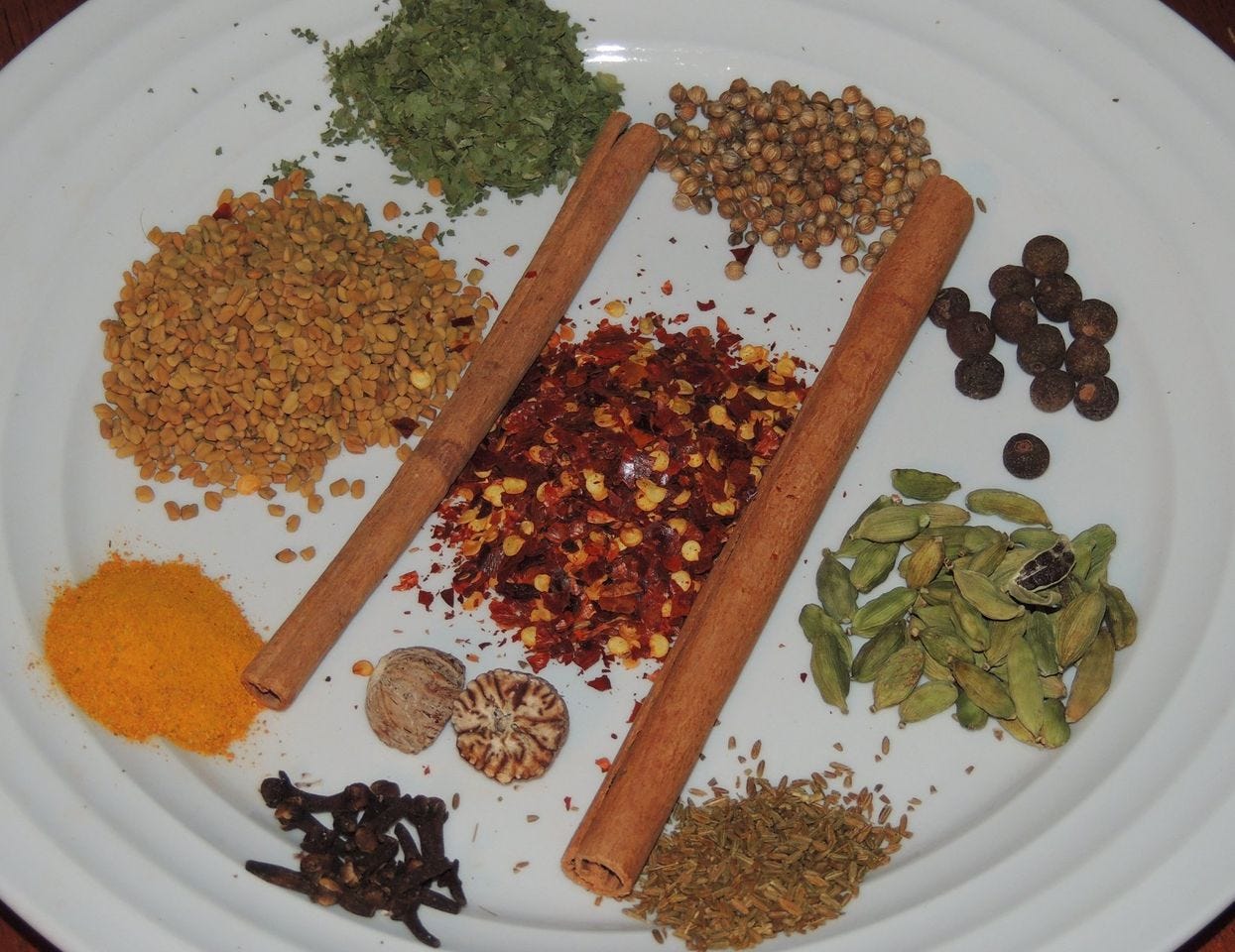


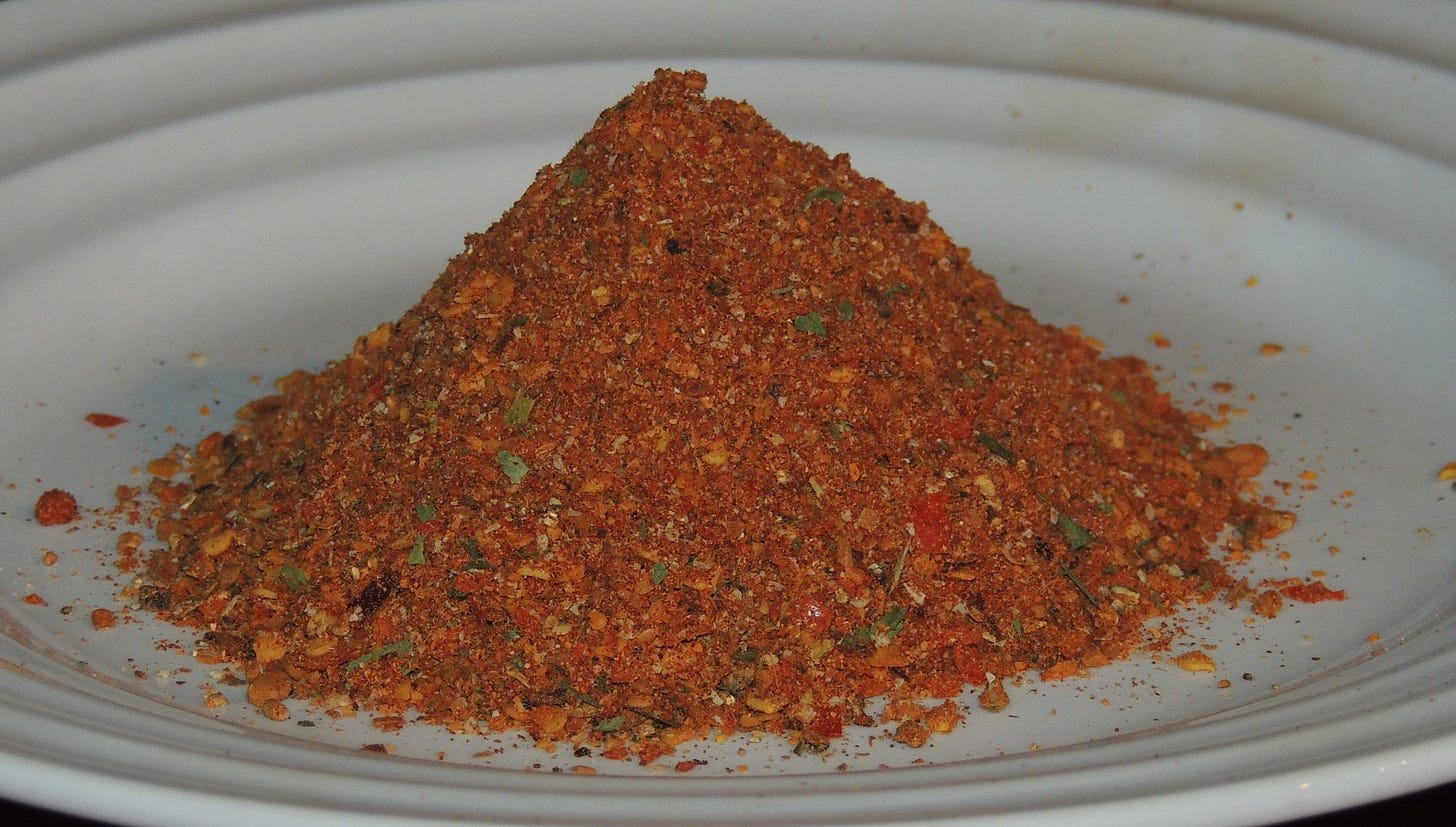
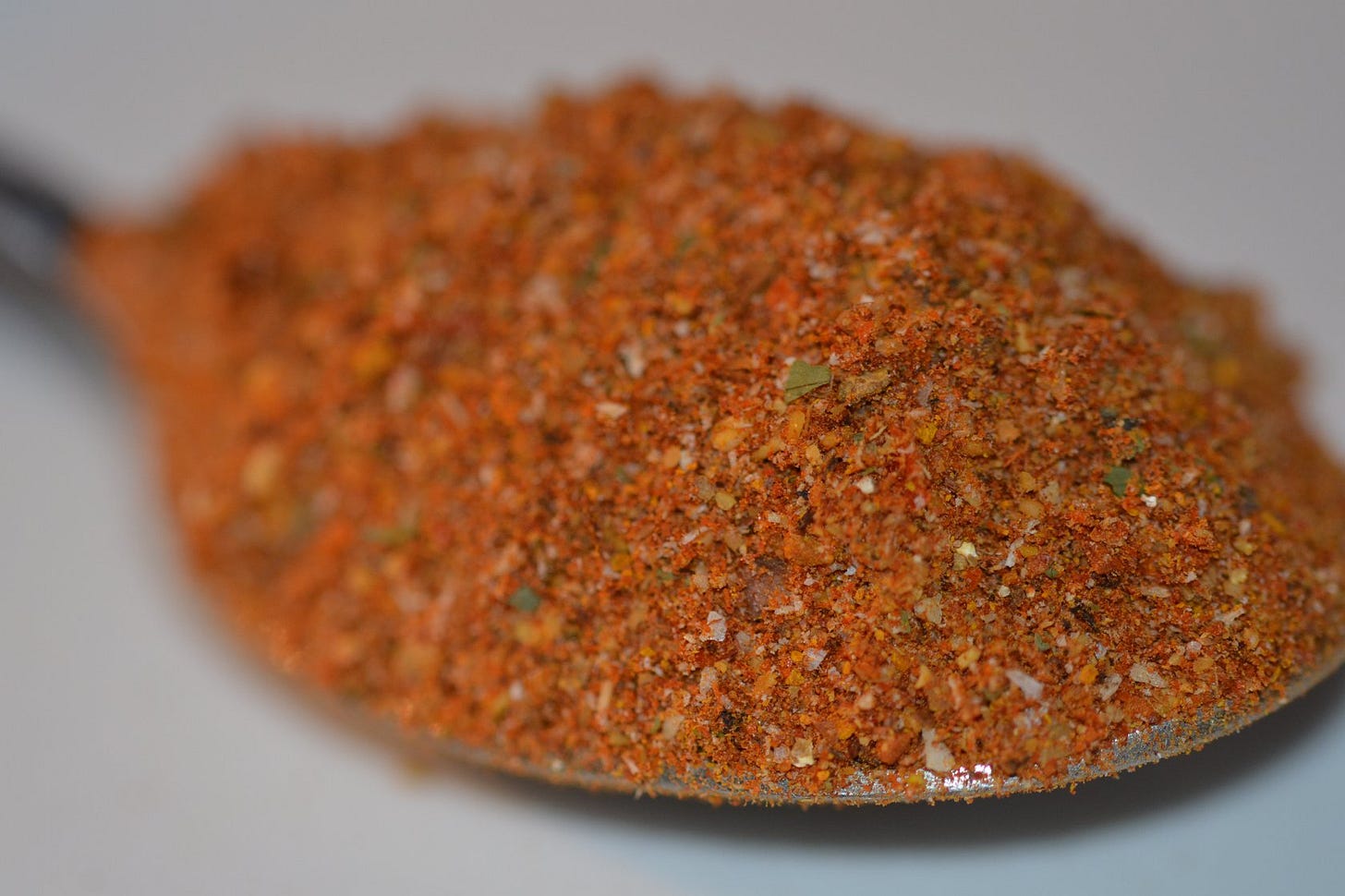
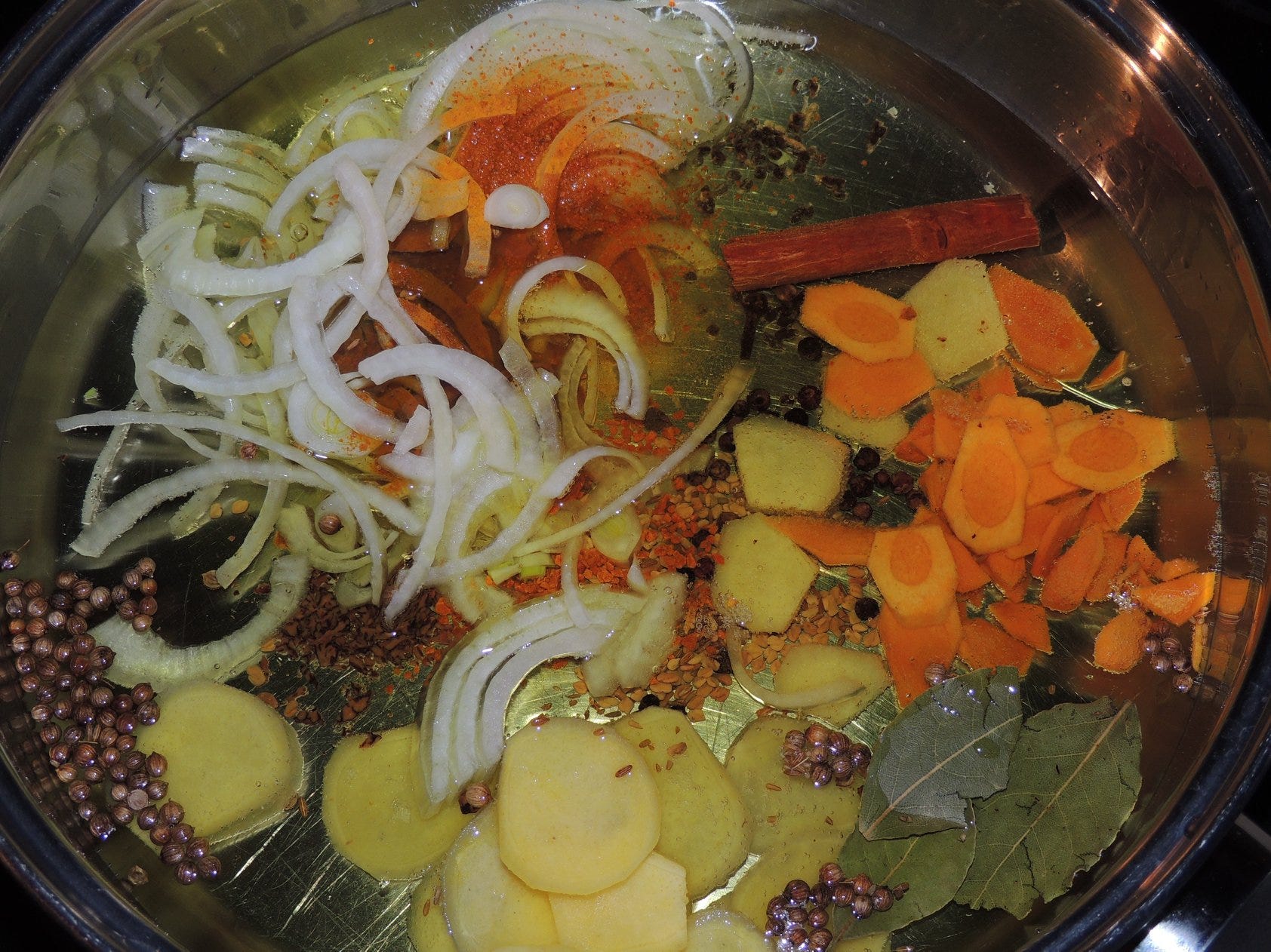
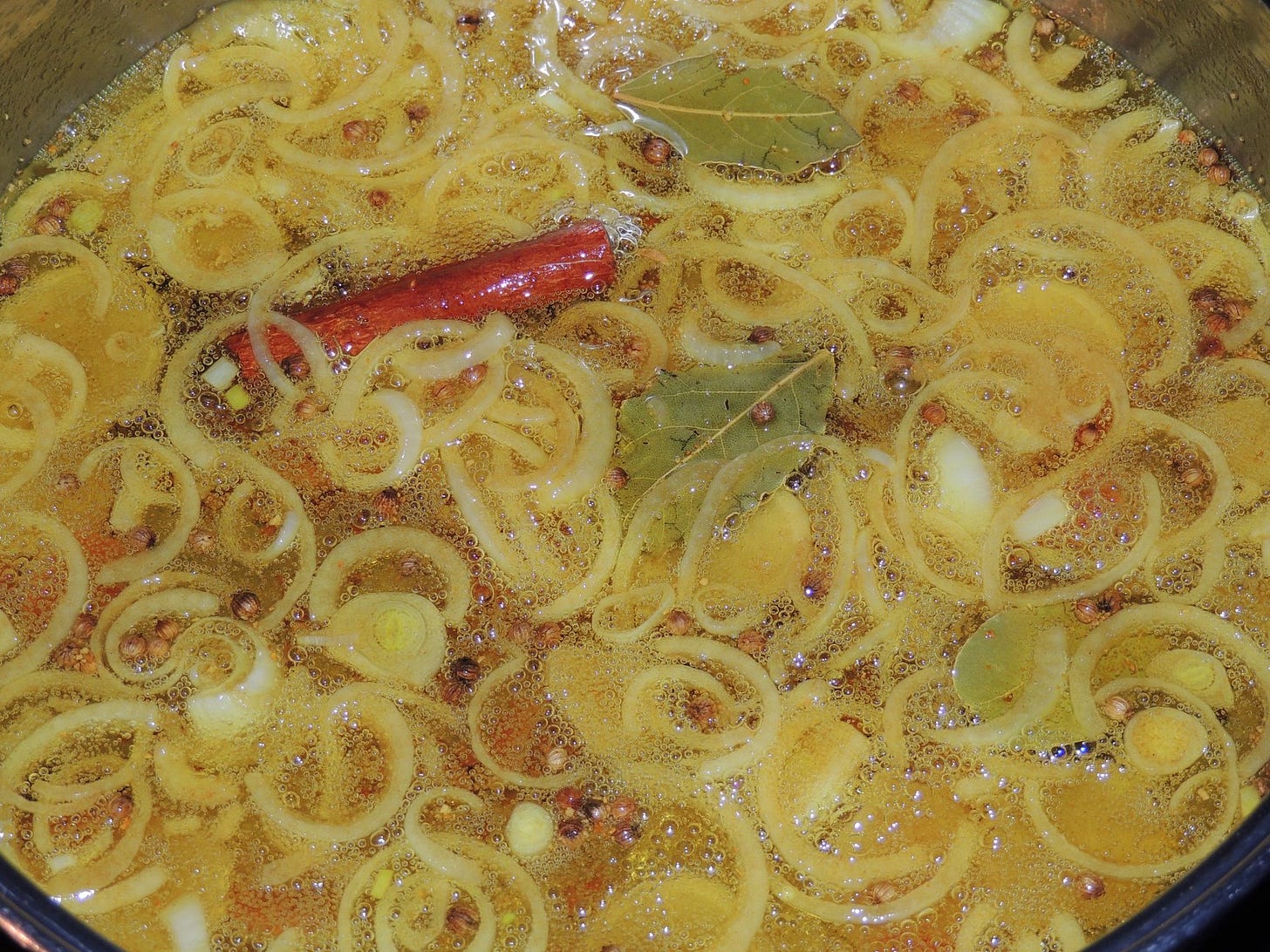
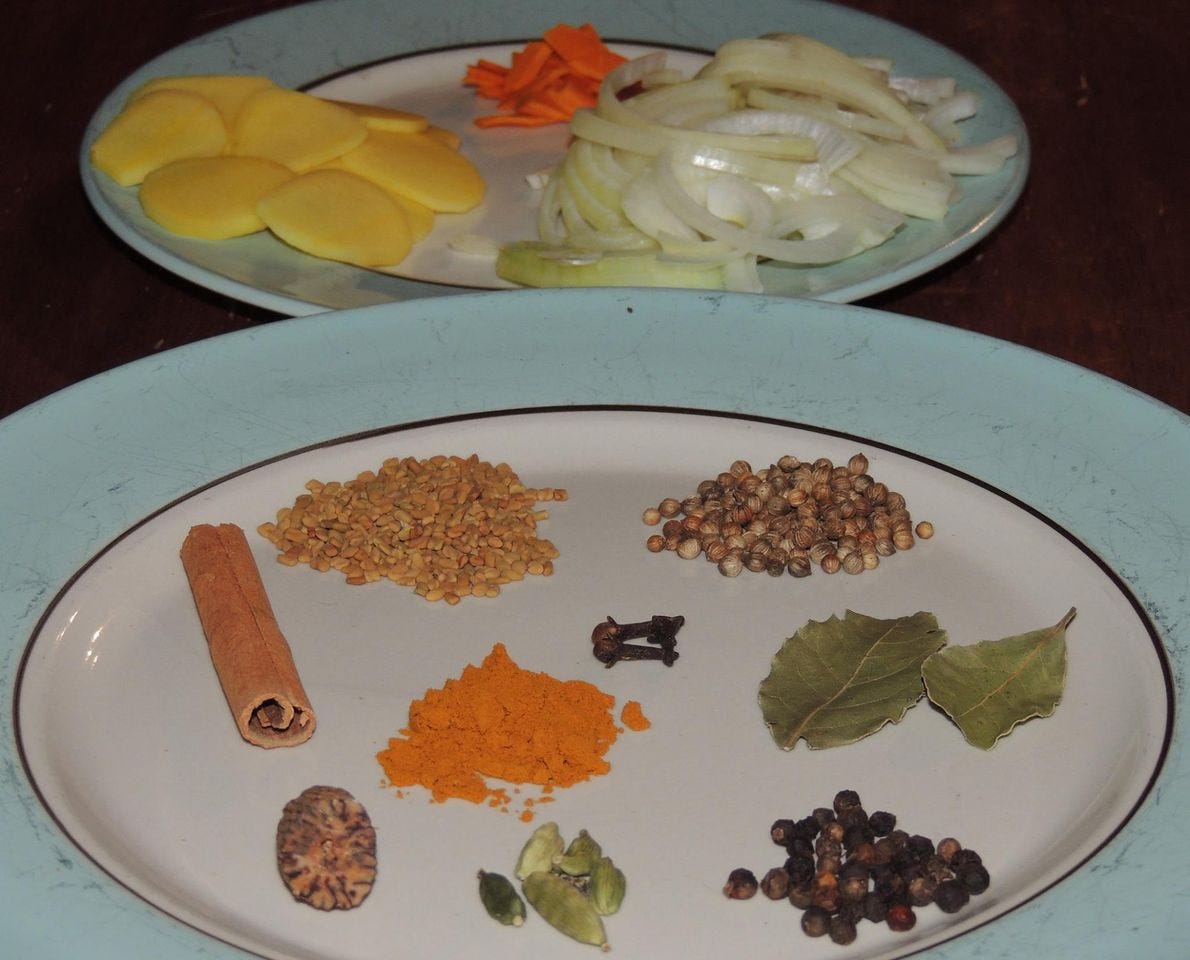

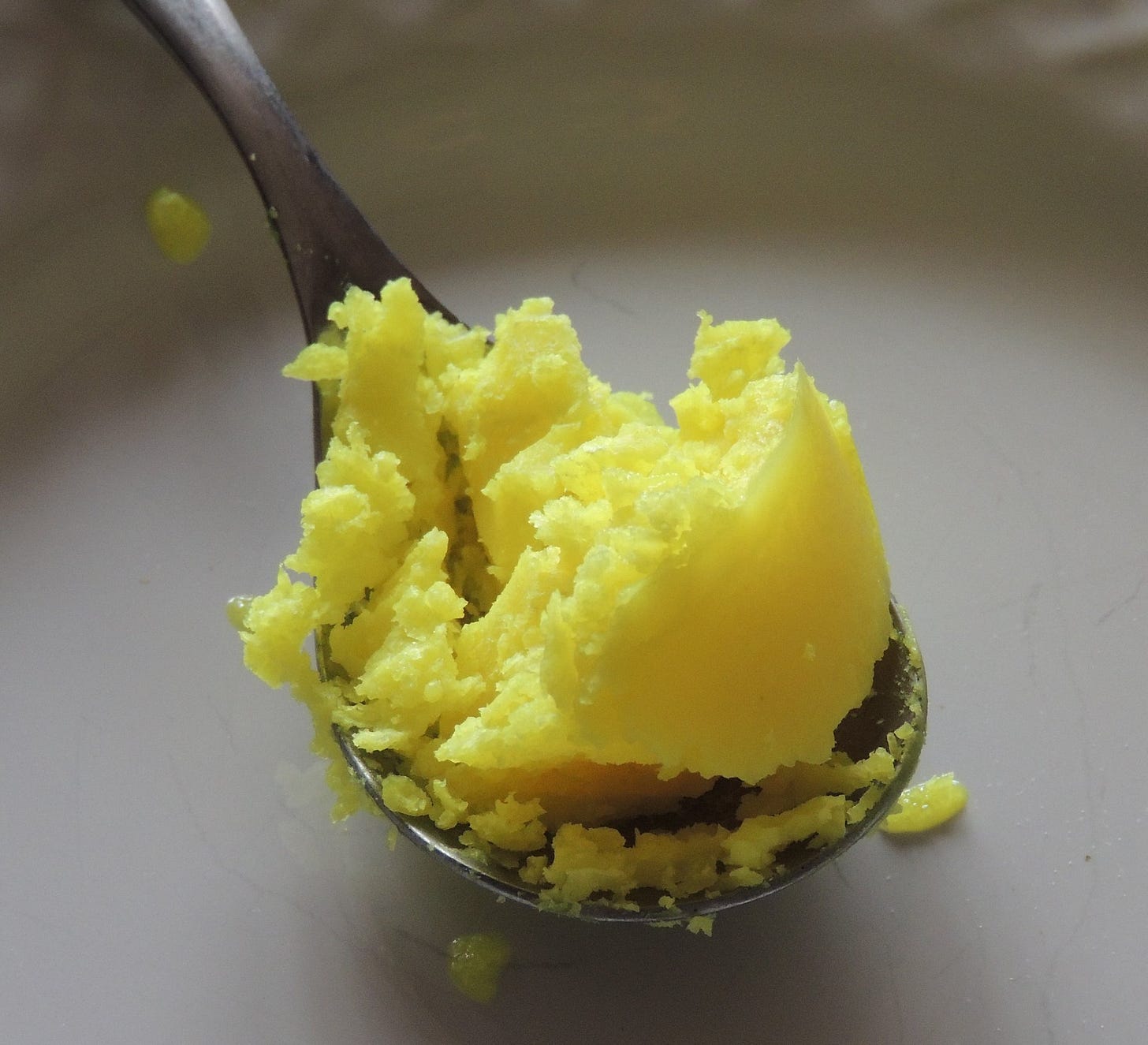

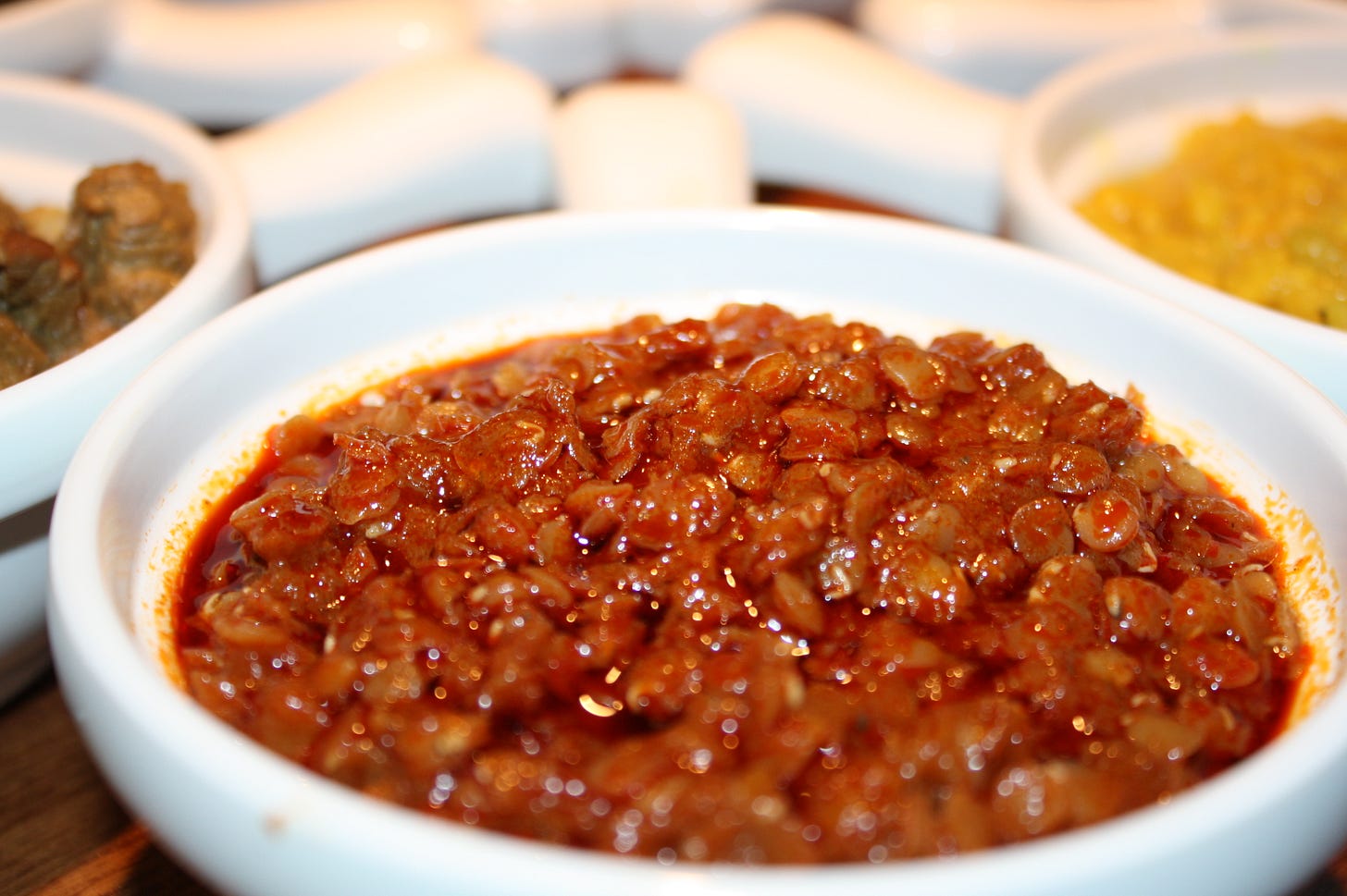

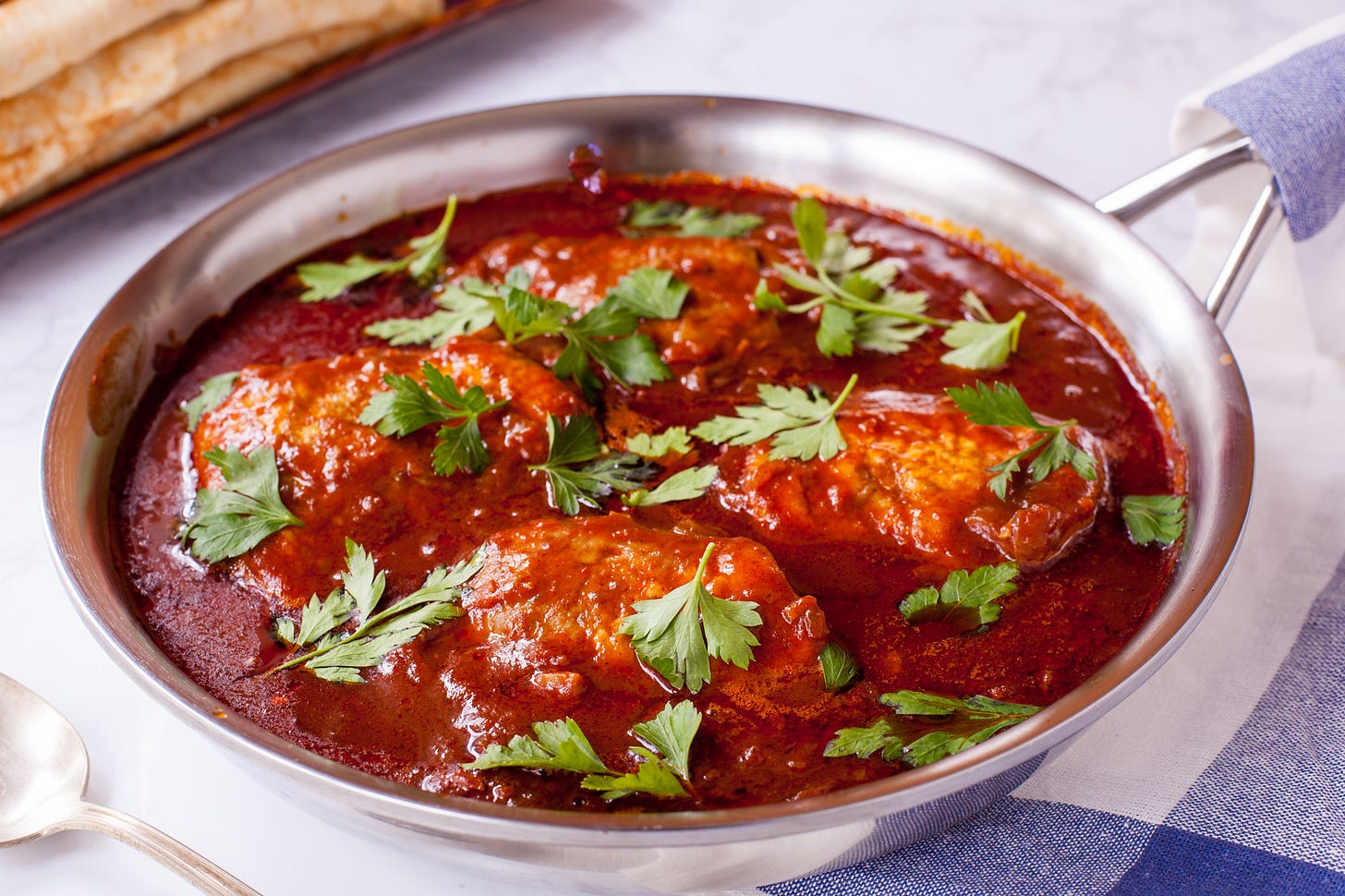
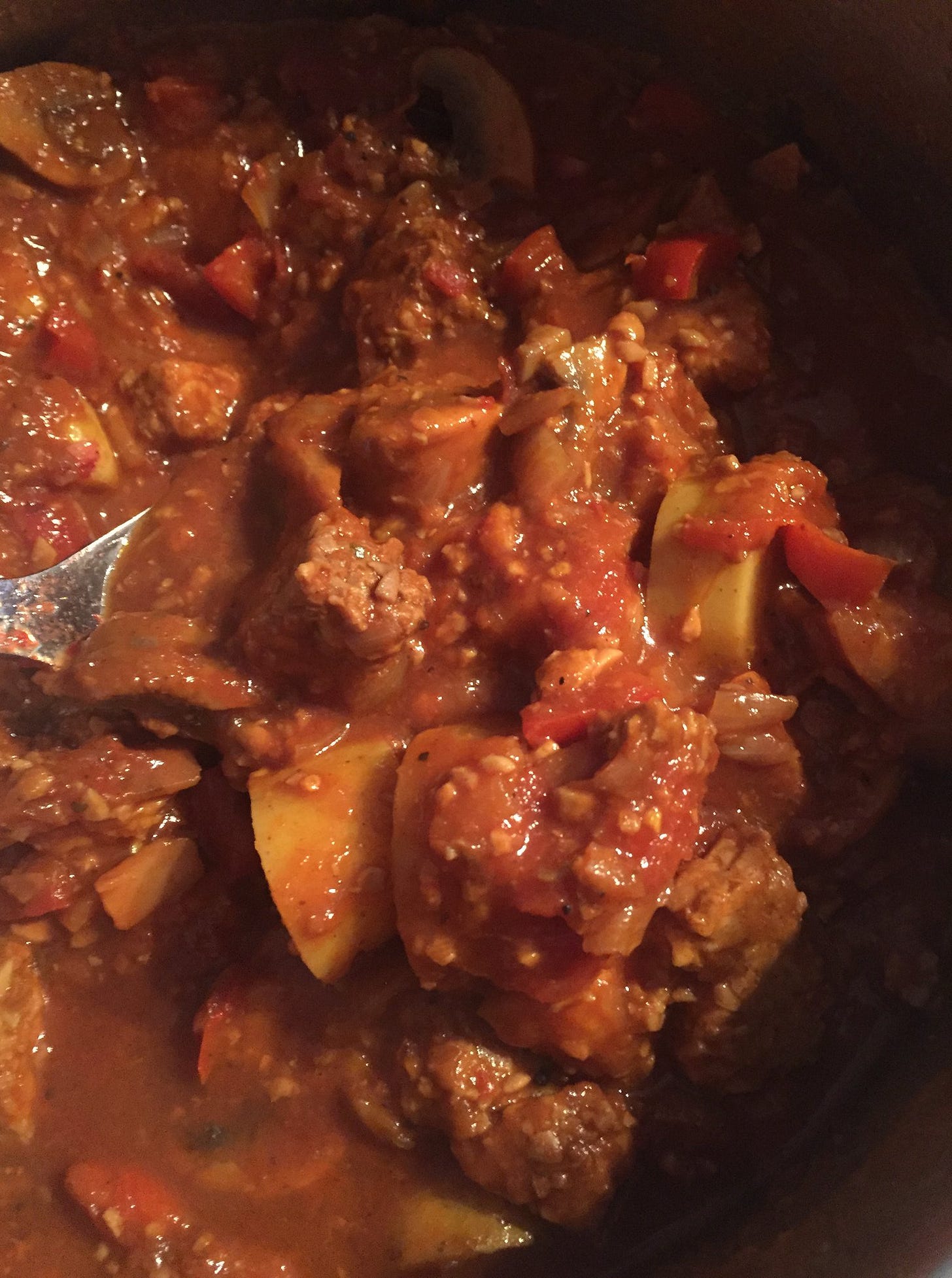



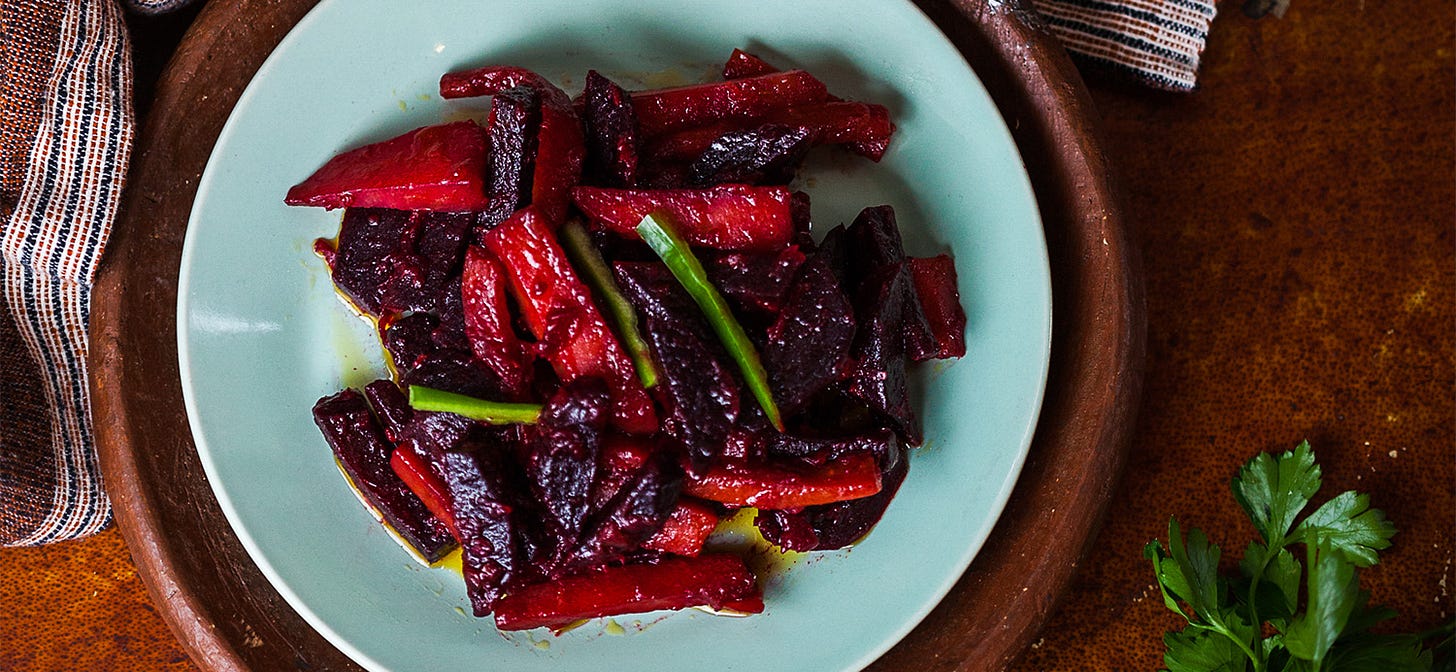

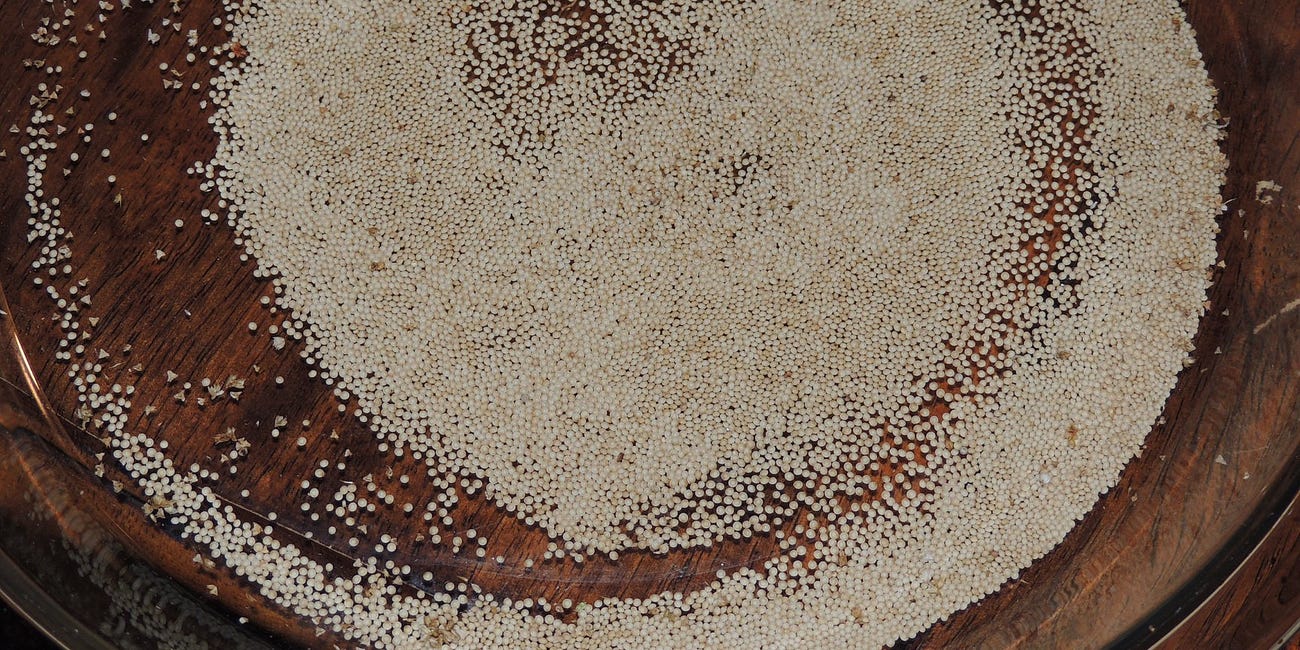
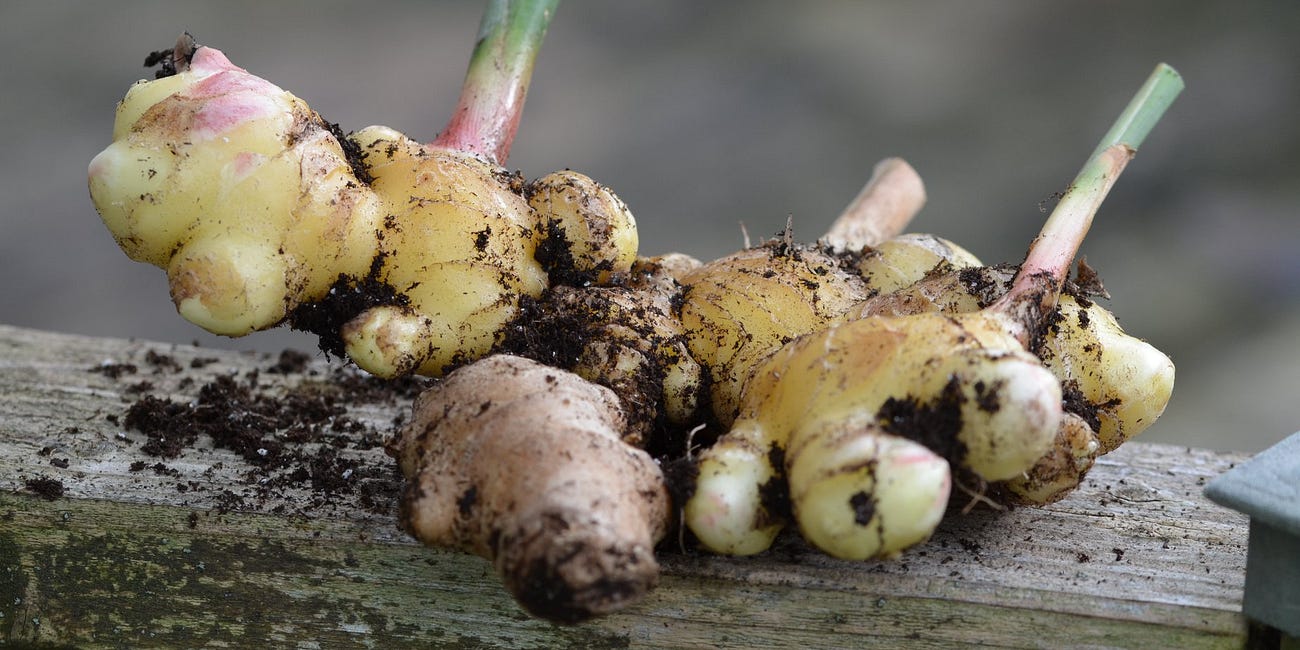
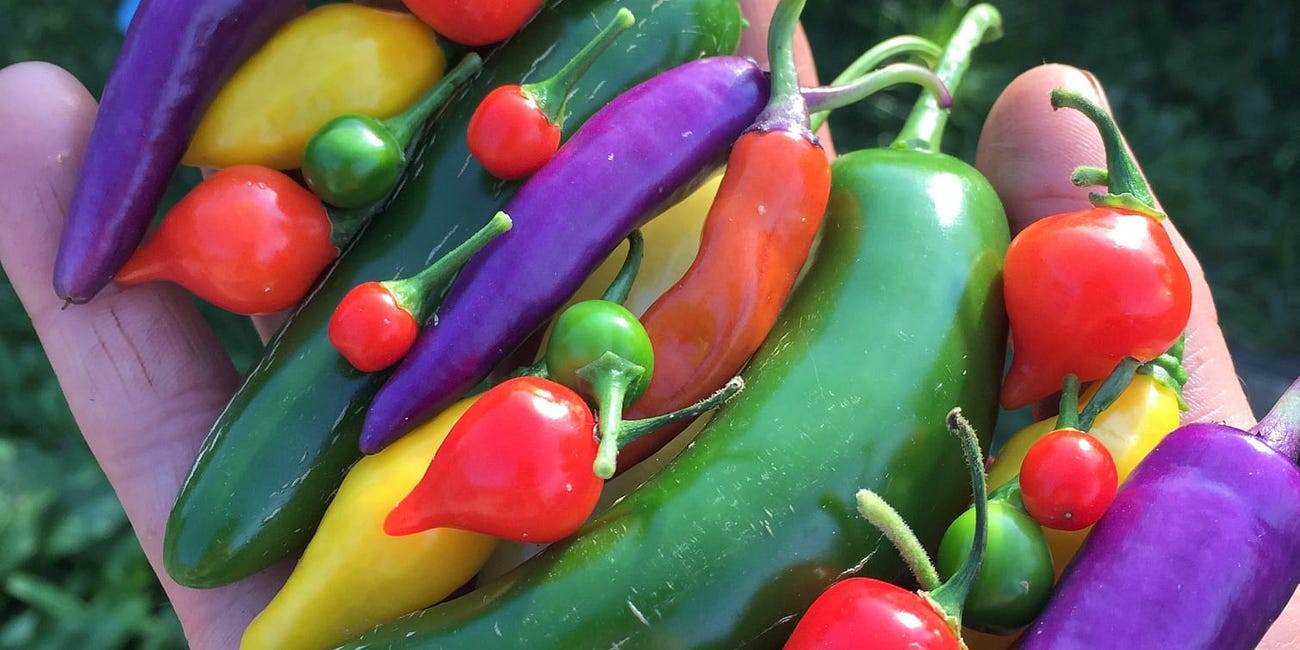
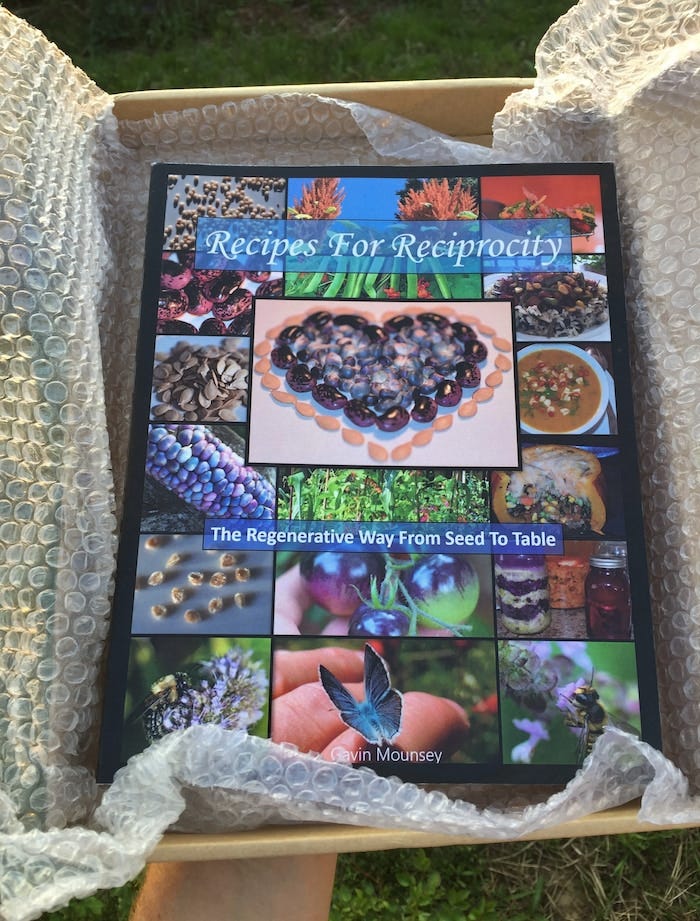

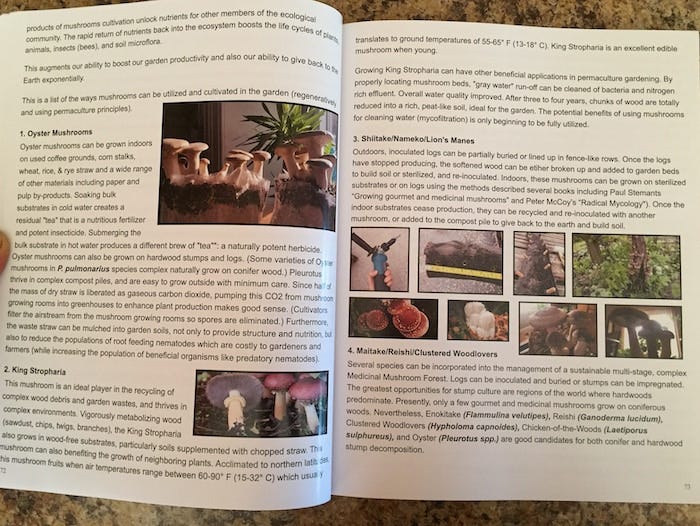
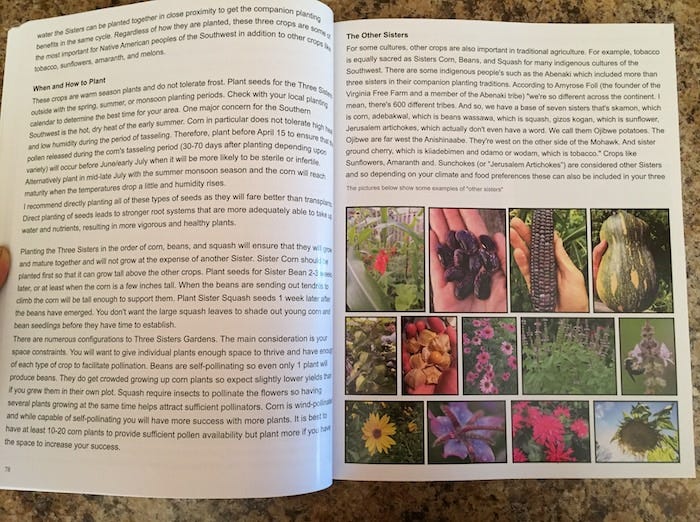
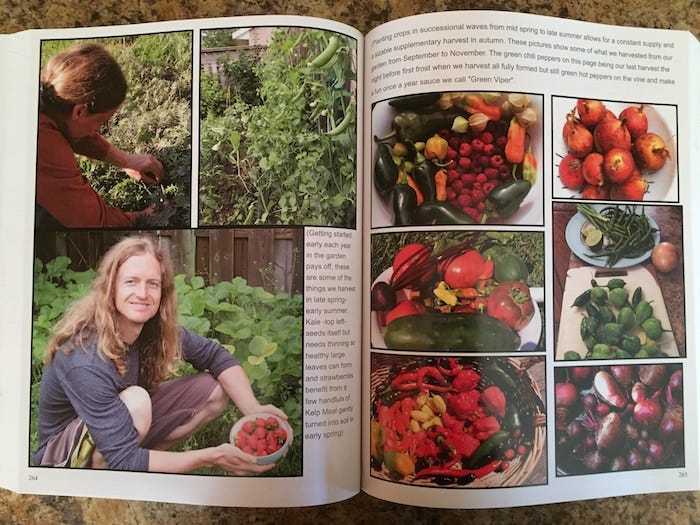
it all looks delicious 😋
This article gives me very fond memories of sharing a house for about 4 years with an Ethiopian man. Many mornings I woke up to a kitchen sink with a bowl of overflowing fermented injera batter sitting in it!
I also learned that in Ethiopian culture it is considered offensive to clear your (or the) plate. They *always* leave food behind -- to be given to the poor and beggars (even if there are no poor or beggars around).